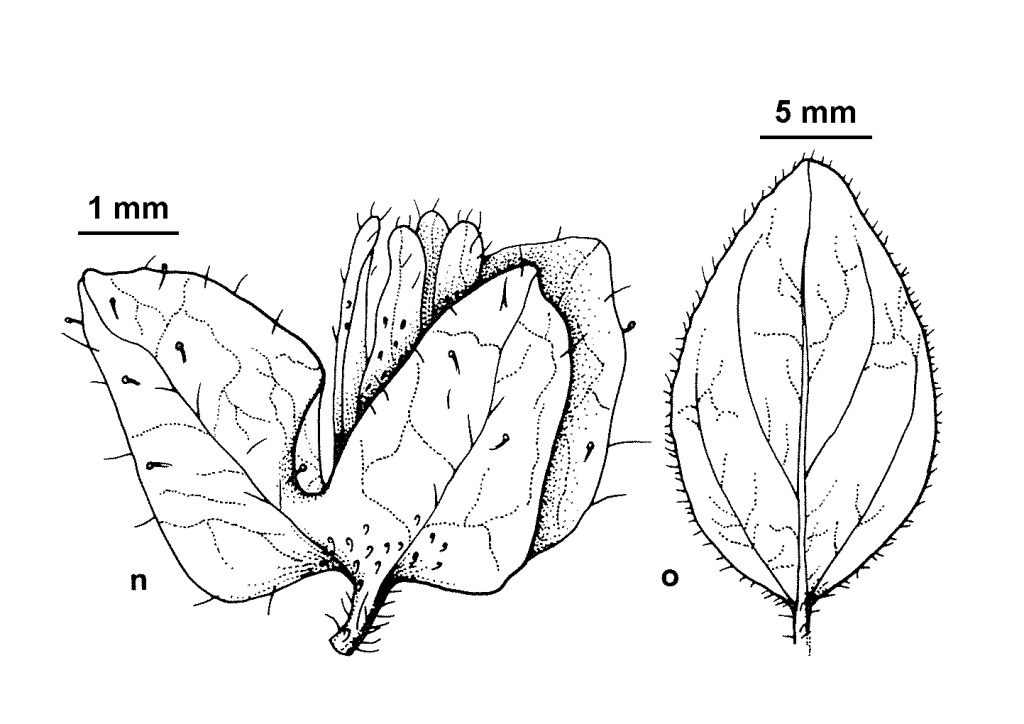Parietaria australis
(Nees) BlumeAnnual herb, 5–30 cm high, not woody at base; stems erect, not rooting at the nodes, upper parts densely covered in flexuose hairs and scattered glandular hairs. Leaf-lamina ovate to broadly ovate, 1–2.5(–4) cm long, 8–15 mm wide, delicate to robust, 3-nerved; base cuneate or truncate; apex blunt or slightly acuminate. Inflorescence a 1-, 3- or 5-flowered cyme; central flowers or solitary flower bisexual; lateral flowers female, subtending bracts 3, with common pedicel, united in lower third to half, broadly triangular-ovate, more or less equal in length, concealing the flowers entirely except for perianth tips, soft and green when young, becoming brown and often hard at maturity, a delicate, reticulate venation visible, midrib distinct; perianth of all flowers similar, c. 3 mm long, mid vein and margins brown; stigma sessile. Achene c. 1.3 mm long, c. 0.8 mm wide, pale brown to pale greenish-brown, soft, sometimes crushed or crumbled; apiculum very slightly displaced sidewards.
MuM, Wim, VVP, OtP, Gold, CVU, GGr, NIS. Also SA. Mostly restricted to Grampians area and further north, growing in moist, shady habitats in woodland on rocky scarps.
Gebauer, R. (1996). Parietaria. In: Walsh, N.G.; Entwisle, T.J., Flora of Victoria Vol. 3, Dicotyledons Winteraceae to Myrtaceae, pp. 87–89. Inkata Press, Melbourne.
 Spinning
Spinning

